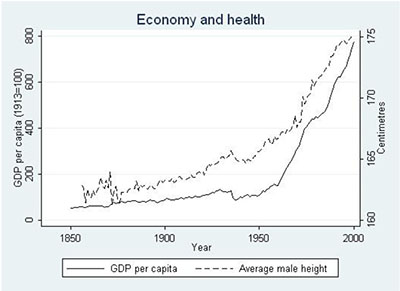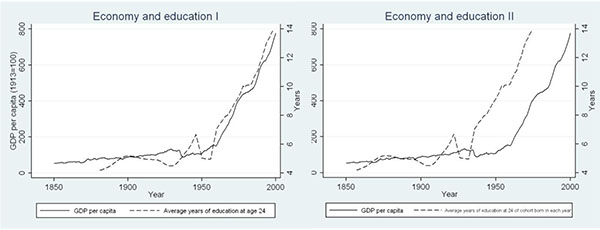Historically, education has been the main engine of economic growth in Spain, according to a study
This is one of the conclusions of a working paper published in 2016 by Enriqueta Camps, professor of the Department of Economics and Business at UPF.
Enriqueta Camps-Cura , lecturer with the Department of Economics and Business at UPF and affiliated professor of the Barcelona Graduate School of Economics, is the author of an article that focuses on the relationship between education and the economy, published in 2016 as a working paper in these two institutions.
 In her paper, the author discusses how the particularities of the development of the education and health systems in Spain, from the 19th until the end of the 20th century, have affected the country’s GDP, and concludes that the formation and accumulation of human capital will become the main engine of economic growth and development.
In her paper, the author discusses how the particularities of the development of the education and health systems in Spain, from the 19th until the end of the 20th century, have affected the country’s GDP, and concludes that the formation and accumulation of human capital will become the main engine of economic growth and development.
Professor Camps’ study shows that the health of the individual has a positive relationship with economic activity during the period reviewed. At the end of the 19th century, the role of health was still central, as it was linked to physical strength, which was required in the agricultural and mining activities that were prevalent during this period, while the role of education was rather secondary.
However, as of the 1970s, Spain evolved towards a modern, democratic and open economy: it was then that the investment in education became the main driving force in the process of the accumulation of human capital, and individual health became an additional factor.
Academic training and health, basic for the understanding of the evolution of GDP
The investment in education has a direct relationship with economic growth and development in today’s global economies.Thus, the particularities of a country’s education system –and its changes over time– can determine the economic evolution throughout its history.
 The methodology through which professor Camps identifies the weight of academic training in the growth and evolution of the Spanish GDP is through the relationship between years of schooling and GDP per capita over the course of the series analysed. She also examines the relationship between people’s average height and GDP as an indicator to evaluate individual health and physical strength.
The methodology through which professor Camps identifies the weight of academic training in the growth and evolution of the Spanish GDP is through the relationship between years of schooling and GDP per capita over the course of the series analysed. She also examines the relationship between people’s average height and GDP as an indicator to evaluate individual health and physical strength.
Apparently, education and health ought always to have a direct and positive relationship with the variation of GDP, but the work by Enriqueta Camps shows that, depending on the historical period of Spain in which we find ourselves, this relationship is not so linear.
Analysis of three distinct periods, between the 19th and 20th centuries
The UPF lecturer studies three well-defined periods: from 1881 to 1929, from 1930 to 1958, and from 1959 until 1998. During the first period (1881-1929) Spain was known for being an agricultural country, not an industrialized one, with very low levels of literacy, which fostered a negative association with increased GDP.
This can be attributed to the low quality of education, which according to the author, can be explained because it was organized by the Catholic Church and focused on theological content instead of technical learning. The Spanish economy was still extractive: physical strength was the main skill required (this would explain the positive relationship between growth in height and GDP) while literacy and other skills were a by-product of education.
During the second period (1930-1958), the result is similar, and education and health were related negatively and positively, respectively, regarding growth in GDP. The Civil war and the recession forced many trained and educated people to emigrate, and this reduced the country’s human capital. In addition, the dictatorship promoted a poor allocation of resources in the formation of human capital, which led to stagnation.
Finally, as of 1959, both education and individual health were positively associated with economic growth. After the process of democratization, the liberalization of the economy and the increase in the levels of education in the 1960s, GDP entered a constant and sustainable process of growth, which was key to Spain’s smooth economic development, and can be compared with other neighbouring countries.
Reference article: Enriqueta Camps (February 2016): “The impact of Investment in Human Capital on Economic Development: An Empirical Exercise Based on Height and Years of Schooling in Spain (1881-1998)”. Working Papers of the Department of Economics and Business at UPF (Working Paper 1514).
